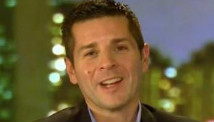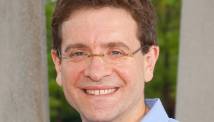(CBS News) Abby Alonzo was 10 when she was diagnosed in 2009 with Hodgkin's lymphoma, a cancer of the immune system. With proper treatment, 90 percent of patients survive.
"It wasn't as hard for me as I think it as it was on my mom and my brother and my dad," Abby says.
Abby began a seven-drug regimen. But in 2010, doctors told Abby's mother, Katie, there was a nationwide shortage of one of the medicines -- mechlorethamine.
"I started to get a little hysterical, 'Why is it not available?'" says Katie.
In 2010, 23 cancer drugs had shortages. Reasons include manufacturing problems and low profit margins for the drugs, which became mostly generic, and therefore less expensive, than brand-name.
"There is really nothing you can do," Katie says. "You do what your doctor tells you to do, you take what medications your doctor tells you to take, and you pray that it works. And if one of those medications isn't available, you just take, you know, the next-best thing."
Doctors thought the next-best thing for patients like Abby was a drug called cyclophosphamide.
Life-saving cancer drugs for children stuck in federal legislative limbo
But a new study in the New England Journal of Medicine showed 88 percent treated with the original drug were cancer-free after two years -- compared to only 75 percent of those receiving the replacement drug.
"This is the first study to clearly show that when we substitute one drug for what we think is just an equally good drug, that's not always going to be the case. So it's demonstrating a negative impact on patients," says Dr. Richard Gilbertson, the director of cancer care at St. Jude Children's Research Hospital.
Abby was one of the patients who relapsed. She then needed a bone marrow transplant, radiation and more chemotherapy. Right now, she shows no signs of cancer.
"What if I relapsed again? Or what if something else happens? You know, it is just really scary, that part," Abby says.
The original drug in the study is finally available again after almost three years. But there are still 13 drugs used in cancer therapy, and a total of 100 on the FDA shortage list.
Congress passed legislation last July giving the FDA more authority to deal with cancer drug shortages. That new law has made a big difference, and the key provision is the requirement that drug manufacturers let the FDA know when there's an impending shortage.
Since that law was passed, there has been a doubling of those notifications, so the FDA can increase imports from abroad and tell other manufacturers in the United States to step up production.
Another provision in that law is that the FDA set up a task force looking at other possible solutions to the drug shortage crisis, and they're required to submit that report to Congress by this coming July.















